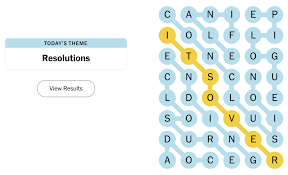About us
Lorem ipsum dolor sit amet, at mei dolore tritani repudiandae. In his nemore lorem, vim ad prima.
Lorem ipsum dolor sit amet, consectetur adipiscing elit. Ut feugiat aliquet convallis. Morbi cursus scelerisque est, a sodales mi fringilla sit amet. Donec ultrices id ante a tempus. Sed scelerisque.

A few things we’re great at
Lorem ipsum dolor sit amet, consectetur adipiscing elit. Ut feugiat aliquet convallis. Morbi cursus scelerisque est, a sodales mi fringilla sit amet.

Intelligent Automation
Lorem ipsum dolor sit amet, consectetur adipiscing elit. Ut feugiat aliquet convallis. Morbi cursus scelerisque est.

Immersive User Interface
Lorem ipsum dolor sit amet, consectetur adipiscing elit. Ut feugiat aliquet convallis. Morbi cursus scelerisque est.

Real-time Collaboration
Lorem ipsum dolor sit amet, consectetur adipiscing elit. Ut feugiat aliquet convallis. Morbi cursus scelerisque est.
Dynamic Design Showcase
Donec volutpat vel ipsum at posuere. Mauris vitae vulputate erat viverra, pretium massa. Curabitur posuere at lorem vel ullamcorper.
Phasellus justo risus, dignissim sit amet tellus ac, accumsan hendrerit mauris. Nullam ultricies, urna cursus facilisis posuere, diam nisl egestas erat, vitae posuere est quam ut diam. Etiam pulvinar sit amet mi a vehicula.
Collaborative Project Hub
Donec volutpat vel ipsum at posuere. Mauris vitae vulputate erat viverra, pretium massa. Curabitur posuere at lorem vel ullamcorper.
Phasellus justo risus, dignissim sit amet tellus ac, accumsan hendrerit mauris. Nullam ultricies, urna cursus facilisis posuere, diam nisl egestas erat, vitae posuere est quam ut diam. Etiam pulvinar sit amet mi a vehicula.
Why Choose Us
Lorem ipsum dolor sit amet, at mei dolore tritani repudiandae. In his nemore temporibus consequuntur, vim ad prima vivendum consetetur.
Aliquam porttitor interdum enim a rutrum tempus
Cras tincidunt ut tortor ut vestibulum. Sed molestie laoreet purus, nec tempus lectus tincidunt eu. Lorem ipsum dolor sit amet, at mei dolore.
Aliquam porttitor interdum enim a rutrum tempus
Cras tincidunt ut tortor ut vestibulum. Sed molestie laoreet purus, nec tempus lectus tincidunt eu. Lorem ipsum dolor sit amet, at mei dolore.
Aliquam porttitor interdum enim a rutrum tempus
Cras tincidunt ut tortor ut vestibulum. Sed molestie laoreet purus, nec tempus lectus tincidunt eu. Lorem ipsum dolor sit amet, at mei dolore.
Testimonials
Lorem ipsum dolor sit amet, at mei dolore tritani repudiandae. In his nemore temporibus consequuntur, vim ad prima vivendum consetetur.
Lorem ipsum dolor sit amet, at mei dolore tritani repudiandae. In his nemore temporibus vim ad prima vivendum.
Jane Doe

Lorem ipsum dolor sit amet, at mei dolore tritani repudiandae. In his nemore temporibus vim ad prima vivendum.
John Denver

Lorem ipsum dolor sit amet, at mei dolore tritani repudiandae. In his nemore temporibus vim ad prima vivendum.
Michelle Smith

What are you waiting for?
Ready to take the next step? Let’s bring your vision to life! Explore our services and get in touch today for a consultation. Together, we’ll make it happen.
Our team
Lorem ipsum dolor sit amet, at mei dolore tritani repudiandae. In his nemore temporibus consequuntur, vim ad prima vivendum consetetur.

Gilbert Fletche
Financial Strategist

Olivia Rodriguez
Financial Analyst

Johnny Rodriguez
Financial Analyst
Our work in numbers
Lorem ipsum dolor sit amet, at mei dolore tritani repudiandae. In his nemore temporibus consequuntur, vim ad prima vivendum consetetur.
employees
230
happy clients
+3M
years of experience
+25
offices worldwide
179
Explore Our Blog
Emma Navarro 2025: America’s Next Tennis Superstar?
Rising WTA star Emma Navarro’s breakthrough 2025 season –[…]
Emma Raducanu 2025: Comeback Queen or One-Hit Wonder?
Emma Raducanu’s 2025 season under scrutiny – Can the[…]
Friday the 13th 2025: Chipotle’s BOGO Deal Draws Massive Crowds
Chipotle’s Friday the 13th 2025 BOGO offer creates frenzy[…]
Contact us
Lorem ipsum dolor sit amet, at mei dolore tritani in his nemore temporibus consequuntur, vim ad prima vivendum consetetur. Viderer feugiat at pro, mea.





